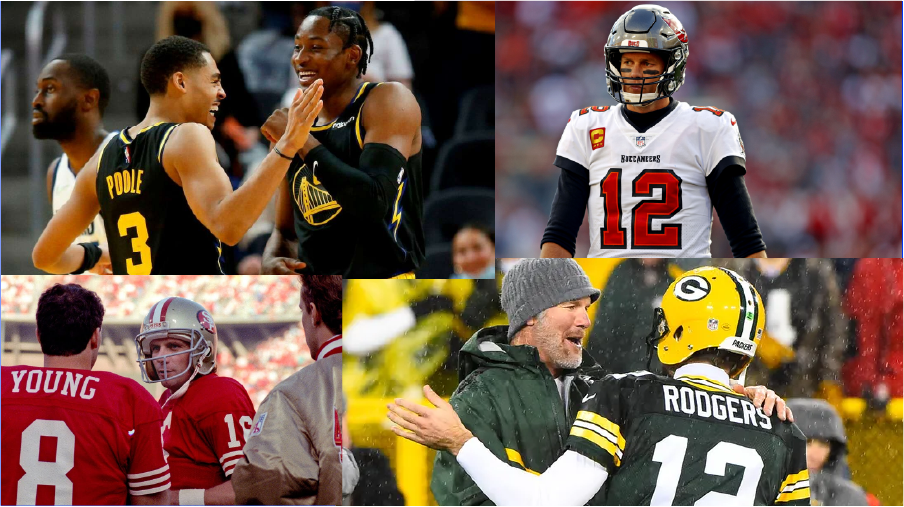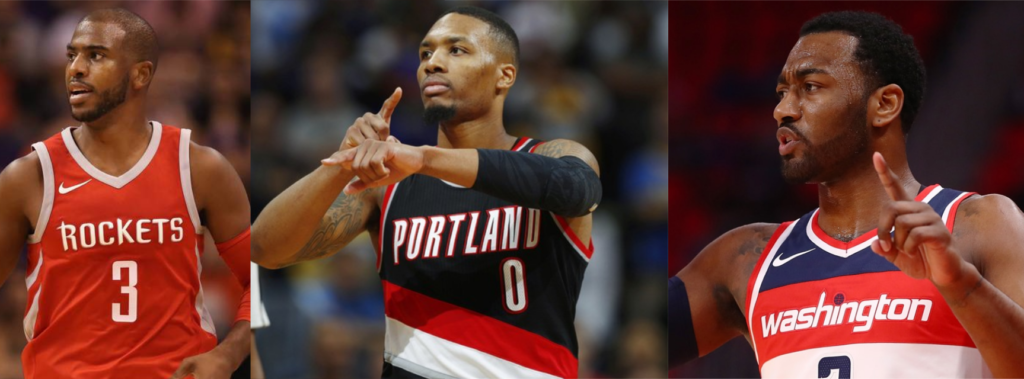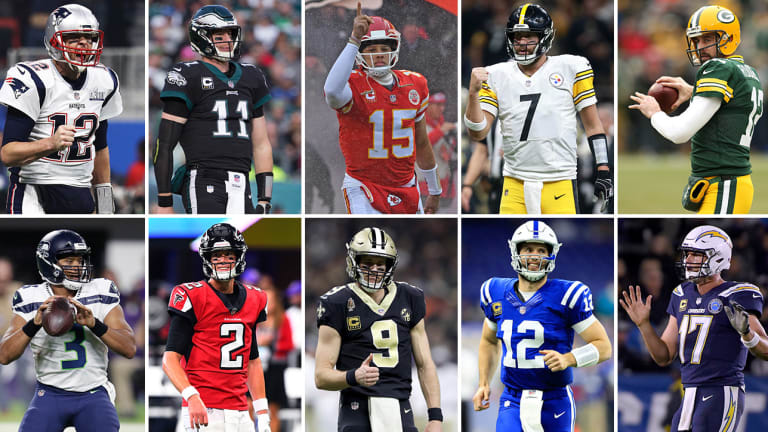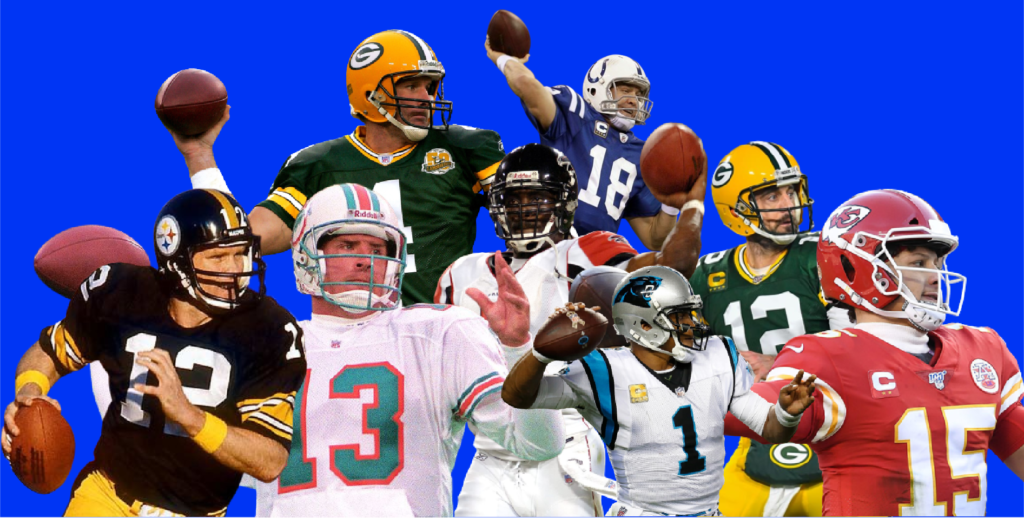Often times, when teams have a great, generational players, there comes a point in time where those great players reach their mid 30s, and a serious discussion needs to be had: Do they keep them until they retire? Or do they move off them a year early and try to build towards the future?
This can take different forms. Teams like the early 2010s Celtics traded all of the original big 3 within a 2 year span to recoup many picks for a rebuild. Other teams, like the 2020s Warriors, tried to draft young project players that could play now, and get better in the future (two timelines), and decided to forego on trading them/some picks for seasoned role players. And lastly, teams like the late 2010s Patriots and 2011 Colts decided not to keep their aging QBs due to concerns (Brady’s age, Peyton’s neck) in favor of starting over.
So basically, you have pick hoarding, two timelines, and fresh starts to avoid an old player overstaying.
Our take? Building for the future in any of these ways is not really worth it. Why? Because there’s no guarantee that the players in that “future” are going to be that good. If you have players good enough to win titles tat in itself is a rarity. So it is wise to ride them out till the end in most cases.
We can just look at some examples. We’ll be using the NFL and NBA.
2019 Patriots
The Patriots refused to offer Brady a long term commitment, going on a few years at that point. Keep in mind, Brady had led them to 3 of the last 4 super bowls, even at age 40 and 41. Brady had a “down year” in 2019, but that has much to do with the poor receiving corps as it did his age. The Patriots let him walk, since then, they have been 25-25, missing the playoffs 2 out of the last 3 years. While Brady went on to win a ring with Tampa Bay. Obviously, Tampa Bay had a good roster that was then bolstered when some free agents signed to play with Brady, but the Patriots still could have gotten back to Super Bowl contention had they simply used that 2021 Free Agency spending spree towards him… and had been able to still acquire some veteran free agents willing to take a pay cut to play with Brady. All they would have had to do is eat the 2020 season – which they already did anyway by signing a 32 year old Cam Newton whose body was already broken down, and who had very little support, making him struggle more than he should have.

2011 Colts
The Colts released Peyton Manning after tanking the season to get Andrew Luck. They did not have confidence in Peyton Manning’s neck. They ended up getting their karma when Andrew Luck was routinely injured (which wasn’t helped by the poor offensive lines they gave him early in his career). More importantly, Peyton proved he still had a lot in the tank with the Denver Broncos, as he led them to 2 Super Bowl appearances and won a ring with them. Andrew Luck was good, and had they built a better team around him, definitely could have made or even won a Super Bowl (as Luck showed the ability to lead comebacks, and even make due with mediocre receiving talent), but most who watched could tell that Luck still had major flaws that made him clearly a notch below Peyton Manning (such as his high turnover rate and over aggressiveness).
2020s Warriors
The Warriors are an amazing, textbook example.
The Warriors resigned Jordan Poole, and before then had drafted Jonathon Kuminga and Moses Moody. Several fans wanted the team to draft more “pro-ready” college players with a lower potential ceiling, but whom could come in right away and be good role players for the current core, or even just trade some picks for veterans (or even trade them to get Kevin Durant again!). Right now? As of the time of this article in 2023, Jordan Poole has had a down year to the point where he might be traded, as he not developed the way they had hoped. Kuminga struggles to get playing time (as not every project player can develop and work out). Moody gets some playing time, sometimes. Overall, if Curry wins a ring, this will be in-spite of the young players.
It can be argued that doing this threw away the 2023 – and even 2021 season (as coach Steve Kerr himself said they “weren’t trying to chase wins” in 2021, and were mostly focusing on trying to develop young No. 2 overall pick James Wiseman, instead of trading the pick and using it on veteran players to make the 2021 season work).
The 2020’s Celtics
This current Celtics team with Jaylen Brown and Jayson Tatum has it’s roots in the late 2010s Celtics teams that were trying to win with Kyrie Irving and Gordon Hayward – veterans in their late 20s. The goal was to “win now and build for the future”. Doing this did not work though – Kyrie and Hayward aren’t true superstar players, so they weren’t able to win. Being able to win “now” and “build for the future at the same time” it’s hard because it’s difficult to get players that are great enough for both. If you want to get great enough players to win now, you’ll either need to trade valuable young assets and picks (Brown, Tatum, Smart), or spend lots of money to resign them to where it’s not worth keeping the young talent.
And if you decide to keep the young talent… it means that there is doubt on the incumbent, current stars. As stated earlier, Kyrie, Hayward, and even later on Kemba, were not great enough players to really lead a team to the championship as the main players.

Another consequence of the Celtics trying this, is that it ended up accelerating the expectations and timeline for Tatum and Brown. From 2018 onwards, Brown (and to a lesser extent, Tatum) have been dangled in trade talks and treated like trade bait, as implied earlier. Every playoff series loss those two have been apart feels more devastating as a result. Fans grow more impatient, and even lament not trading them… instead of having regular, relaxed expectations given their ages. And lastly, it’s created a scenario where Brown may feel underappreciated – though he did somewhat deny this, later on.
Conclusion
One of the few examples of this actually working out is with the 49ers after they let Joe Montana go and moved onto Steve Young. They won a Super Bowl in 1994, while Joe Montana did not win a ring with the Chiefs. However, he still did have success there… they made the AFC Championship his first year in 1993, and then lost in the divisional round in 1994. One can argue, however, that given how Young’s tenure went in San Francisco, it’s not hard to imagine them having still won a ring in 1994 had they kept Montana. The team signing Deion Sanders was a big factor in them being able to win that year, which should not be forgotten either.
The 2008 Packers are another example. By moving on from Brett Favre, they started Aaron Rodgers, and proceeded to win a Super Bowl by 2010. Favre… went to the NFC championship game, but threw a crucial last minute interception that prevented the Vikings from getting a potential game-winning field goal in regulation. And then Favre fell off and retired after the 2010 season (the year the Packers won).
Conclusion
Ultimately, what this comes down to is how you believe championship teams are built. If you believe championship teams have players that can be “developed”, and rely heavily on the front office making the perfect moves, then it make sense to support moving on from veterans and building towards the future.
However, if you believe championship teams/dynasties start and end with special, generational players, and that front office and coaching play more of a complementary role, then you probably think that you are better off riding out the veteran players longer, in most cases.
One thing everyone should agree on, however, is that the one time you definitely should move off an older player, is when they have already experienced diminishing returns. Case in point: Brett Favre. During Favre’s last 6 seasons in Green Bay, he had many playoff losses that were largely lost on him either throwing game-losing interceptions, or just throwing many interceptions in general. And in those games, his defense did not play particularly bad in some of them.
It’s always good to have some nuance. Things aren’t always 100% or 0%.





